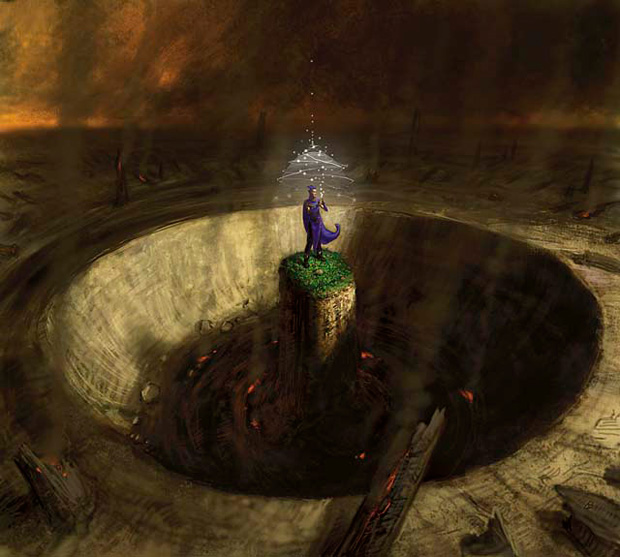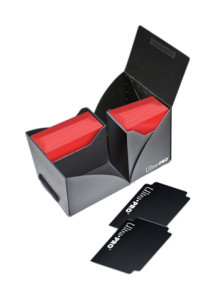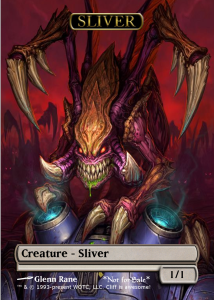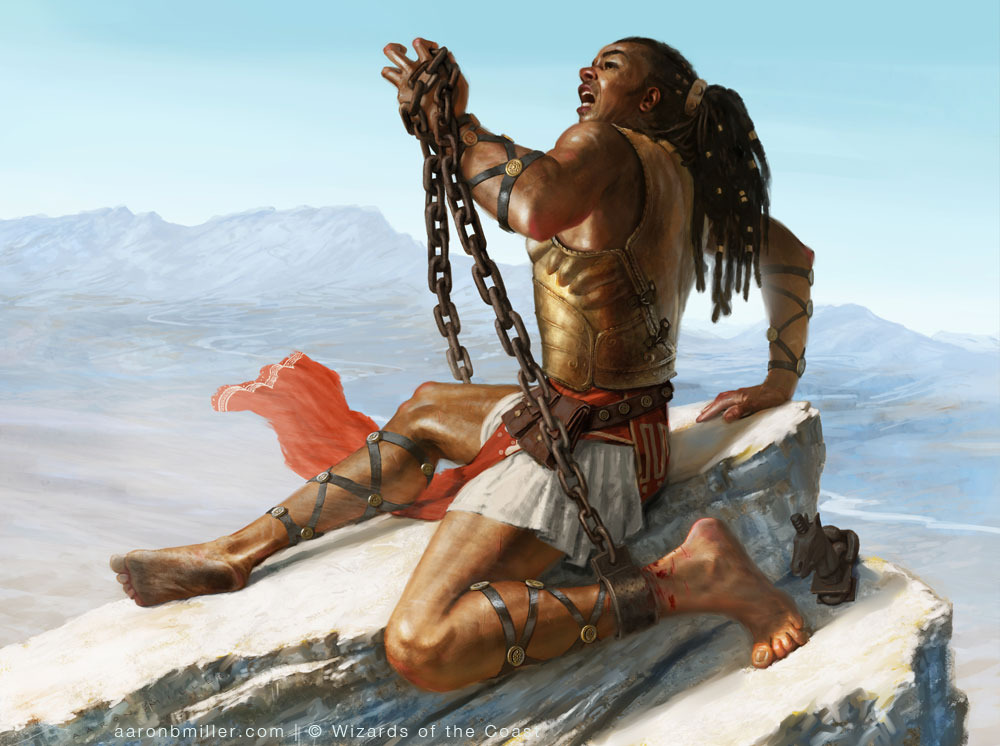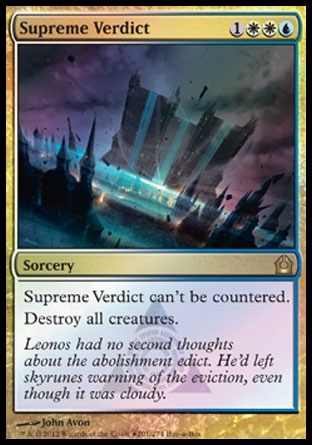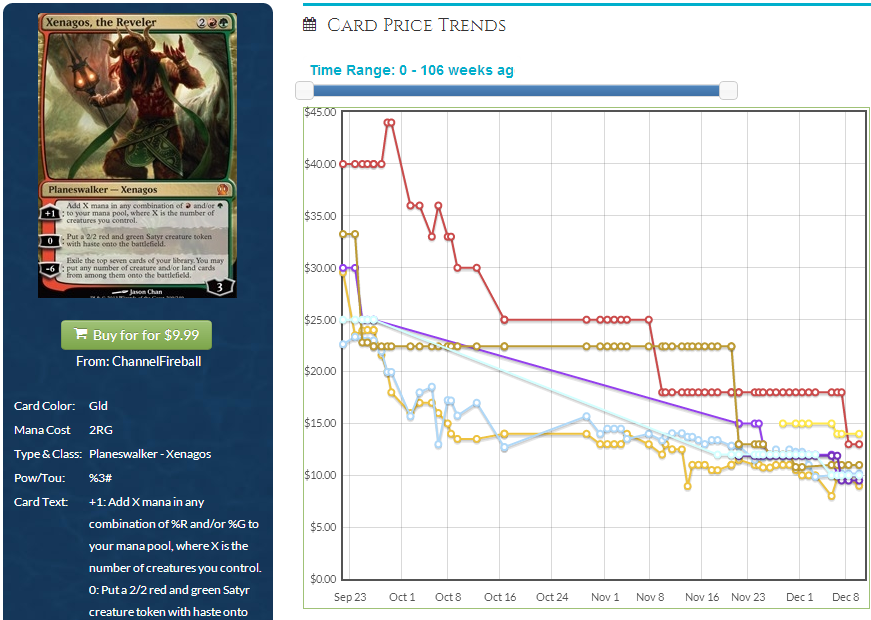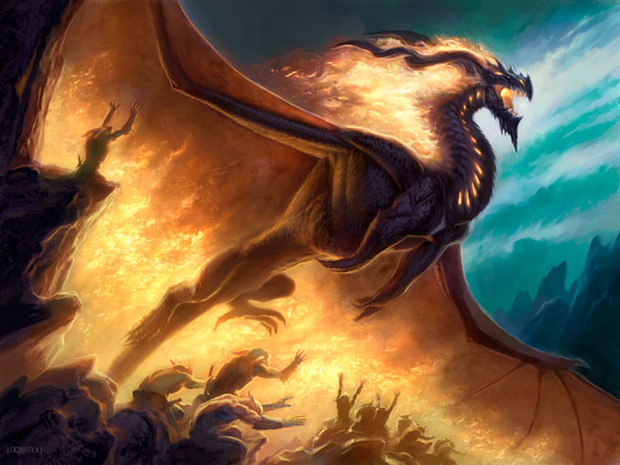There’s a hidden set of costs to playing magic.
We don’t often talk about it, either. We mention it in passing sometimes when it catches our fancy, but it’s a real thing. I’m talking about everything you use while playing the game. Sleeves, dice, playmats; the list goes on and on. Magic has exploded over the past few years, and the accessories that you use while playing have seen a similar growth.
One of the things I want to make clear is that you don’t have to spend this money. This is money you choose to spend in order to upgrade a certain part of the experience.
Sleeves
Allow me to sound like an old fogey for a moment. I was there when “blackbacks” were first introduced to the gaming public. Everything until that point was based off of baseball cards. You had penny sleeves, or you had the big thick top loaders.
Magic was being played on benches, on concrete or brick, on anything really, stored in boxes all without sleeves. You would shuffle Magic cards just like you would a deck of playing cards. This meant a lot of damage very quickly to your cards, especially in terms of edge wear.
Sleeves with opaque backs changed everything. Not only were you keeping your cards from getting all scuffed up, you were also able to hide damage already done. This was immediately relevant to me, as I had some specific cards that had locational damage. As I recall, I had a Lord of the Pit with a bent corner.
Within the popularity of the black sleeves, the companies sensed a desire for more variety. Before long, you could have your green deck with green sleeves, your blue deck with blue sleeves, and so on.
Now you’re able to spend a significant amount of money and get just about anything you might want on your sleeves. I’ve seen custom inserts, and I imagine that fully-customized sleeves with personal art choices are not far away, if they don’t already exist. You can double or even triple sleeve your cards. There is a lot of discussion and a lot of personal preference when it comes to sleeves.
I like having different sleeves for different decks. I have been fortunate enough to find zombie sleeves for my Zombie deck and shiny foil vampire sleeves for a shiny foil Vampire deck. Personally, I can vouch for the durability of Dragon Shields. Shuffling an EDH deck can be tough on your sleeves, and can cause them to split or burst. The KMC perfect fit are another winner for me; my go-to perfect fit sleeve for the rarest of my cards.
Dice
If you want to further refine the unique experience of the game, dice represent an easy way to do that. You have an array of colors, and even an array of materials. Stone, wood, metal, bone, etc.
Magic’s history is also full of special dice, such as spin down dice with different set symbols, or translucent dice from the Premium Deck Series.
It is surprisingly easy to find very expensive dice. Especially exotic material dice, which can run $30-$40 for a set. If you want to get really fancy, look up iron dice and the many varieties they offer. Be careful if you have a few iron dice; they can really destroy plastic ones if kept in the same container and left to rattle around.
Similarly, dice boxes can fetch all sorts of prices, depending on how intricate a display you opt for. My wife and I brought coffin-shaped dice boxes complete with ghost and spirit counters with us to Worlds when Innistrad was the draft format. If you choose to look on Etsy or Ultra-Pro for custom boxes, you’ll find more than you expect.
A momentary aside on dice and life: Once you start using a notepad for life totals, you’ll never go back. All you need to do is bump a life die once and you’ll see the simple genius of writing things down. I have a six-inch stack of notepads that I have accumulated from the last few big events I’ve attended – all you need to do is see which vendors are giving them away at a GP or the like.
Playmats
You don’t need to use a playmat in many circumstances. Sleeves and a tablecloth work just fine. But playmats are useful for marking off your own territory, keeping yourself organized, and as a way to add structure and routine to your game.
Most large events have an official playmat, and it’s possible to find just about any of your favorite card arts if you look hard enough. If you went to GP Las Vegas this past summer, you can expect to fetch $40-$60 for just the playmat on eBay today. There are other ways to acquire unique playmats as well. Judges for certain events receive them, Gameday winners get one, PTQ Top 8 earns a playmat…the list goes on.
If you happen to have a Spellground mat big enough for two players sitting in a closet somewhere, go take a look at eBay and see if yours is in good enough condition to fetch a few hundred dollars. It’s from 20 years ago, and it doesn’t give special shuffling powers, but collectors are collectors.
It’s worth noting that custom playmats can be had from many Magic artists, or you can go online to have a custom playmat made from the image of your choice. All of these things are possible – if you’re willing to spend the money.
Deck Boxes
Sure, some of us make do with a plain white 800-count baseball card box, but there’s so many other options out there! I’ve made custom deck boxes from booster boxes, I use fat pack boxes to hold EDH decks, and it seems that whenever I see a container of some sort, my first thoughts are of cards.
Currently, I use a Dual Deck Box from Ultra-Pro when drafting. One side is for sleeves, the other is for dice and counters. I’m a huge fan of deck boxes that have a space for extra things, like tokens and dice and maybe even a pen. I’ve been impressed at the number of options available to us, especially if you want to go all-out on Etsy for something one-of-a-kind.
Binders
True story: I’ve got some Ultra-Pro pages that are more than ten years old. They have the outlines of cards in them, and they look a little dingy, but they are still quite effective. I much prefer binders with three rings over binders that have a set number of pages, mainly because if I rip a pocket, I want to be able to replace that page.
I also really like binders which zip closed, and have handles or straps. I’ve seen too many big thick binders drop and spill precious pages because the owner didn’t have a solid grip.
Tokens
Hanging out at assorted forums, I’ve learned how to make my own tokens. Here’s an example of one I made for my token-themed EDH deck, which has Sliver Queen as the general.
I made a card with Kerrigan as the Queen, so the tokens had to be Zerglings!
Custom tokens like this are one way to personalize your experience. I’ve known people who carry a bag of green army men, or other small and cheap figurines. I’ve also seen large stacks of the official tokens, and as someone with a Zombie deck, the Unglued versions are by far the best.
Carrying Cases
In the event that you aren’t content with a backpack for your gaming needs, there are a few options from companies who want to make this easier for you. Personally, I prefer the backpack over the duffel bag, but to each their own. You’re probably going to try some different options before you settle on the one you like.
Dragon Eggs are something I’ve seen used, but were a little too small for my taste. I really like the pocket for a life pad, though! My wife uses an Ultra-Pro Gaming Case, and while that’s awesome in a lot of ways, I don’t want to carry that as well as a binder.
My goal with this is not to tell you what to buy. In my opinion, the only thing you *must* have is sleeves, simply because it protects your investment or hides preexisting damage. If you’re at a major event (competitive REL or higher,) I also feel you should be using a notepad to track life totals. Everything else is optional, and is going to come down to what you want out of your Magic experience. As I said, I’ve used a lot of different accessories over my Magic career, and what I’m using now might not be what I’m using next year. For instance, have you seen this spicy number from Ultra-Pro? I haven’t used it, but if that front compartment holds a life pad and a pen, it’s going to be hard to resist…
